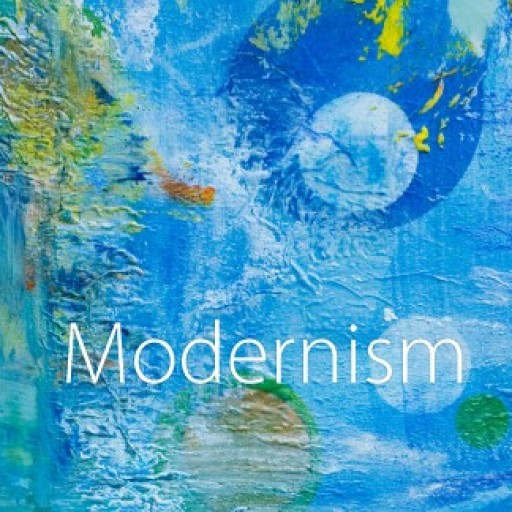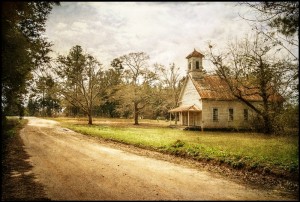Kelsey Morgan
December 1, 2015
James Diedrick
ENG 350
I have lived in Atlanta, Georgia (Alanna, Jaw-juh), for most of my life, and my childhood, for the most part, was pretty suburban. Yet I still have a strange love of the romanticized south; the not-always factual vision of what the south is, the questionable and often not politically correct south. The side of the south you can only find when you go really backwoods, read 20th century literature, or watch “Fried Green Tomatoes.” So a part of me loves and lives in the really old, deep south, or what I know of it from fiction and movies.
Red clay, bare feet (something I’ve always deeply longed to be able to enjoy), and hot summers immediately come to mind. The kind of dead, white grass that’s prominent smack in the middle of summer and winter. I have never seen true green grass in the south unless it’s been chemically treated. There’s a certain sweet smell the grass gives off in the summer that’s never found anywhere else. The heat of Georgia is thick and almost tangible, like you could use it like a blanket. I’d also have to talk about the concept of a Georgia road trip. The roads that go on for miles and miles without any notable landmarks. Frankly, anything that’s not trees, cows, cemeteries, or crop fields.
Driving into the depths of Rome, GA or Florida, you know you’ve left the liberal Atlanta because of the myriad of obscenely inaccurate Pro-Life signs that crop up. The discomfort that arises from walking into a store or even driving past a car that proudly waves confederate flags for everyone to see. The quaint small towns that look cute and homey on the outside, but that harbor people who would give you a sideways glance if you happened to be anything but white, straight, and conservative. The towering Southern Baptist church that looms on the horizon. Though modern and updated in terms of appearance, it still conjures images of white boarded ceilings, floors, and ladies with big hats and hand fans. Old pick-up trucks rusting on the side of the road, double barreled shot guns, and the moss that looms down from Savannah trees. Dirty old Coca-Cola advertisements on the side of rotting general stores, and abandoned barns taken over by grass and kudzu. Historical southern splendor of speakeasies, horse and buggies, boiled peanuts, and every kind of food fried to perfection. Country fairs, old gas stations, “O’ Brother, Where Art Thou?” and peaches.
Language like “Bless your heart,” “’Murica,” “all y’all,” “aint none,” “sho’ nuff,” and “shooting the hootch” is commonplace and never even given a second thought. Where grits (can’t have just one), chicken and waffles, okra, baked beans, and pecan pie is what’s on the table. I’d hope my images would evoke a feeling of country charm, giving readers a feeling of being in a different time. Or perhaps rural Georgia is like a different world, giving off an over-friendly, yet sinister feeling. Almost as though there’s something off about the place, but you can’t quite figure it out. It’s too nice, too peaceful, too homey–at least on the surface. And yet it’s a place you want to keep returning to in future readings.
Works Cited:
Toomer, Jean, and Darwin T. Turner. Cane. New York: Liveright, 1923. Print.


What a great paragraph about the paradox of the “romantic” south:
“Driving into the depths of Rome, GA or Florida, you know you’ve left the liberal Atlanta because of the myriad of obscenely inaccurate Pro-Life signs that crop up. The discomfort that arises from walking into a store or even driving past a car that proudly waves confederate flags for everyone to see. The quaint small towns that look cute and homey on the outside, but that harbor people who would give you a sideways glance if you happened to be anything but white, straight, and conservative. The towering Southern Baptist church that looms on the horizon. Though modern and updated in terms of appearance, it still conjures images of white boarded ceilings, floors, and ladies with big hats and hand fans. Old pick-up trucks rusting on the side of the road, double barreled shot guns, and the moss that looms down from Savannah trees. Dirty old Coca-Cola advertisements on the side of rotting general stores, and abandoned barns taken over by grass and kudzu. Historical southern splendor of speakeasies, horse and buggies, boiled peanuts, and every kind of food fried to perfection. Country fairs, old gas stations, “O’ Brother, Where Art Thou?” and peaches.”
I’ve only visited the rural South once or twice, but I found is quite peaceful as I stayed in the Toomer country, or, in other words, the country were all the black folks stayed. I love it. I was too young to talk about anything that could cause a stir, so the conversation was nice. The air smelt clean. The grass was a lime green almost, sometimes fading to yellow. Most important of all, it was utterly quiet, which frightened me and excited me at the same time. I see the country as the true South. The worst of and the best of the South is highlighted there.
I think it’s really neat how you’ve managed to combine a lot of the hypocrisy and closed-mindedness of the South with the disparity between the romanticized old South and what it really is. I think I’ve seen a lot of similar things in my time growing up here, especially in my home town where one of the most notable features of the “historic” area is an old-timey Coca Cola advert on the side of one of the stores.